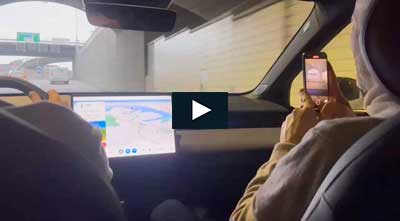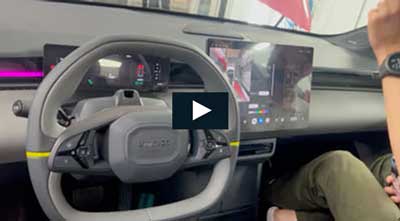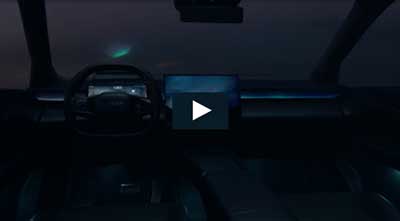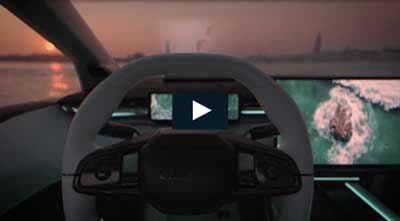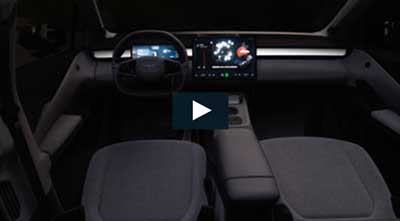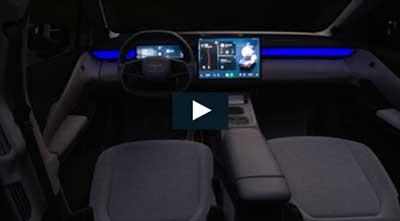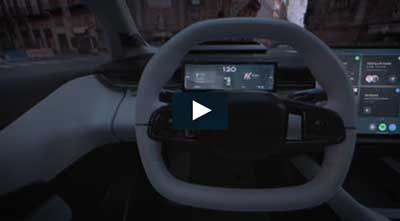By Paul-Henri Matha
In October 2024, DVN was glad to be invited to the Lynk & Co 02 reveal in Milano. We took time to talk and listen with Eileen Hwang, Lynk’s interior designer and lighting experience specialist, to talk about the car’s interior lighting design (amongst other topics). We also talked about the 07, 08, and 900 models.
I wanted to know more about the ‘Infinite Light’ concept that was presented, and we wanted to know a bit more about the technology behind and beyond it.

Paul-Henri Matha, DVN: Eileen, can you give more details about what you call Infinity Light on Lynk & Co 02?
Eileen Hwang: It all began during an interior team workshop three years ago. The task was to bring an inspiring image, and I brought this one.
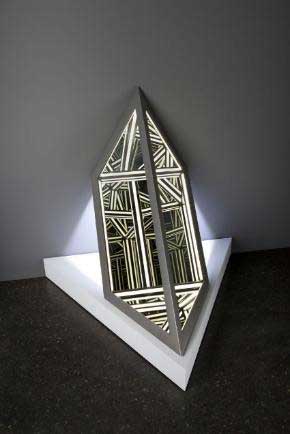
I thought it was a great futuristic reference, a simple yet powerful structure that creates the illusion of infinite space using mirrors. That was the beginning of our Infinity Light experiment.
With Lynk & Co’s ‘Next Day’ design philosophy, we emphasize four key pillars: Proud Tech, Rich Experience, Dare to be Lynk & Co, and Next Premium. Our vision for this new lighting concept was to encapsulate all four.
The journey continued with sketching and brainstorming alongside our lighting engineer, Kevin Mulligan. One of our early ideas was a floating headrest that appeared to exist within an infinite space. It was a bold concept, so we tested it in VR, and it turned out to be the perfect embodiment of Proud Tech, delivering a beyond-reality impression.
We explored various placement options for the Infinity Light, and to enhance the user experience, we ultimately positioned it on both sides of the central screen. This not only amplifies the lighting effect but also creates a more spacious feel inside the cabin.
DVN: Can you explain the evolution of the 02 from previous Lynk & Co models, like the 07?
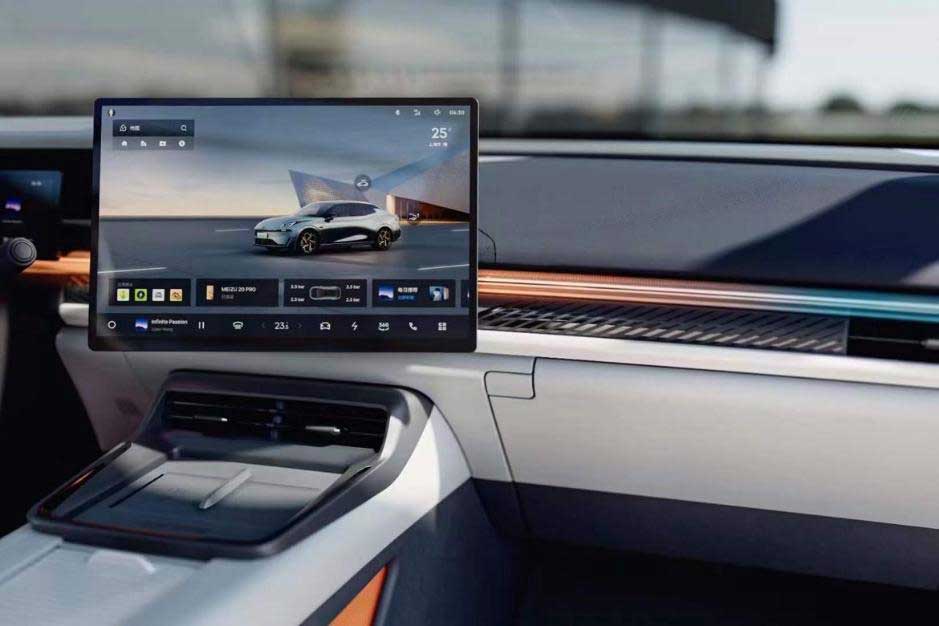
E.H.: The lighting feature in the 07 was mostly carried over from the 08. Our key focus was achieving a ‘techy’ and ‘next premium’ look, which we accomplished through careful material selection and pattern design.
We used a tinted lens with a backlit pattern, allowing the light to appear sharper, creating a sophisticated and premium feel. Additionally, we extended the lighting animation through the door speakers in a stretched design, further enhancing the sense of roominess.
However, the approach for 02 was completely different from the start. We always strive to create lighting features that best fit the interior theme, and the 02 is a very different car from the 07 and 08—so it had to have a distinct lighting identity.

Our goal was to innovate beyond existing market solutions and showcase how bold and forward-thinking our brand is. That’s why Infinity Light in the 02 fully embodies our core design principles.
DVN: What is the technology behind it? it looks like a well know technology (mirror effect) also seen on exterior lighting like Citroën DS3 rear lamp. Am I correct?

E.H.: The effect itself isn’t rocket science—and that’s the beauty of it. With a relatively simple process, we can create a powerful experience. It’s a bit of ‘smoke and mirrors’ in its approach.
Unlike rear lamps, our Infinity Light spans across the instrument panel, meaning it follows a compound curve. One of the biggest challenges was overcoming the ‘fishbowl effect’ caused by this curvature.
Packaging constraints were another major hurdle. To maximize reflections, we conducted extensive testing and had to carefully refine every detail—because even the slightest error could create wavy lines or distortions in the pattern.
DVN: Could you share a vertical section to understand how it works? And, what is the pitch between each led ?
Eileen: Sorry, but we can’t share too many details. However, LED pitch is driven by cost and animation requirements. It varies across brands, but our approach was to use the minimum necessary while ensuring the smoothest possible animation.

DVN: Did you develop unique technology with your lighting and interior suppliers to obtain this final design? How did you develop it—like, did you render it with virtual tools like Speos, for example? Or did you need physical mockups?
E.H.: I’m proud to say that we developed everything in-house first. We started with a very simple test like left image and gradually refined it into small box prototype to mock up. And we took the prototype to the China R&D centre in Hangzhoubay and collaborate with our supplier. it wasn’t easy for them either. Our supplier worked with Speos simulations and CAD data, but physical verification was still necessary, so we travelled multiple times to fine-tune and improve quality.
DVN: How many colours are selectable from the central display? can you explain us how you define different colours?
Eileen: The following picture is self-explanatory:

DVN: What is the role in your team between you and Samuel from UX? How do you define the role, is it similar to R&D between hardware and software engineers?
E.H.: It’s a highly collaborative effort. Once we had a clear direction with prototype finished, Samuel’s UX team ‘breathed life’ into the concept, shaping how the interaction system works with the Infinity Light to provide real value to the customer.
For example, it also plays a role in warning functions, like door open alerts or seatbelt reminders, making interactions more intuitive.
We don’t see our roles as strictly divided like traditional hardware and software engineers. Instead, we take a holistic approach, merging technology and design to enhance the overall interior experience
DVN: Do you have sequential animation of infinite light, LED by LED?
E.H.: The RGB LED rear combination lamp can generate a total of 256 different colour variants from the three basic shades of red, green, and blue, thus creating not only dynamic but also multicoloured lighting animations. In addition to welcome/goodbye scenarios, this also includes coloured animations after locking the vehicle, during the charging process, or as a burglar alarm.
DVN: can you talk on the next step? We have already seen on the Lynk & Co 900 what seems to be an evolution of Infinite Light.
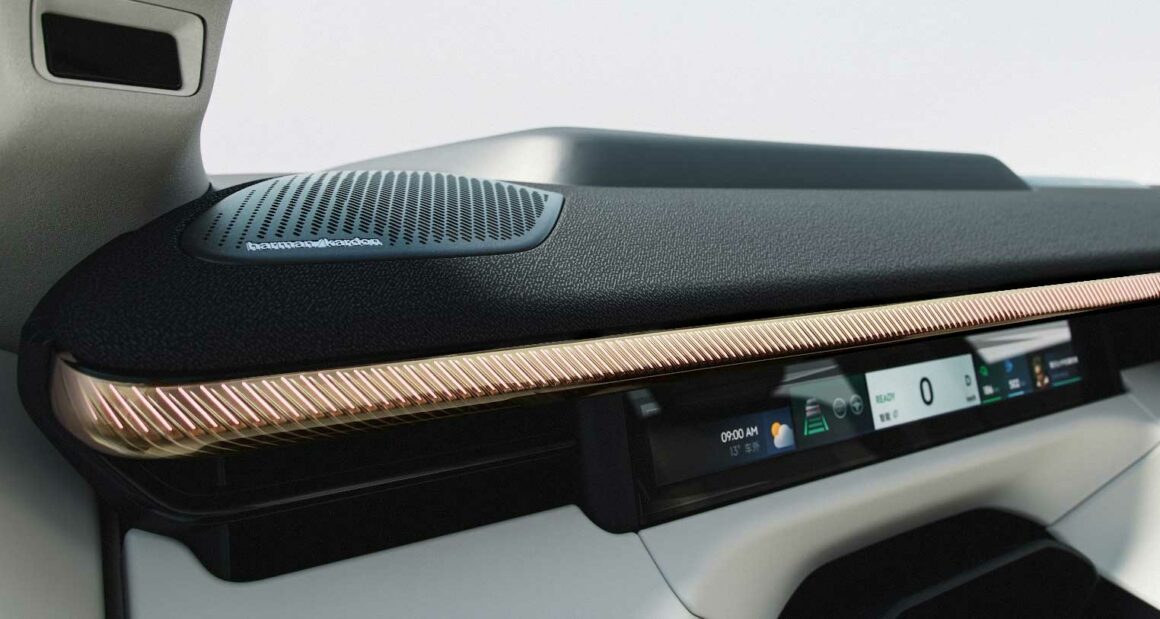
E.H.: The lighting feature in the 900 is more of an evolution of the 08 and 07 rather than the 02, as they belong to different design sectors.
The 900 approach is more advanced than what we used in the 08 and 07. We introduced laser-etched patterns on a PVD-coated surface behind a 3D 2K mold structure with Yanfeng partnership. Additionally, the speakers feature backlit PVD accents.

Our goal was to create a 3D pattern under a clear lens to enhance depth perception. Even when the lights are off, the structure remains visually appealing. But when illuminated, it delivers a highly technical and futuristic feel.
DVN: Can you talk about the user experience and lighting UX features you have developed?
E.H.: we have different ambient modes. Lynk & Co design is done in Sweden. Each car has its own UX experience. This new way of thinking and working is clearly pushed by Chinese customer expectations.
On the Lynk & Co 02, we are interacting with music and turn indicator activation.
We are proposing, for example, two Swedish mode available with OTA update: Aurora and Westcoast, on top of the standard drives modes
Second, we use interior lighting to interact with different functions (phone call, voice assistant, climate control, drive modes, fireplace, turn indicator). Possibilities are infinite.
Moving forward, we will continue designing lighting features that not only elevate the aesthetic but also enhance the overall interior storytelling.
And right now, we’re already cooking up the next evolution of Infinity Light—so stay tuned!

